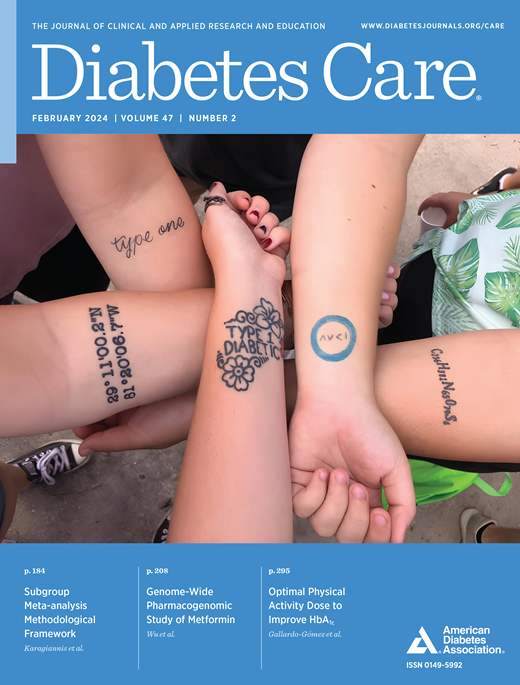Management of Diabetes and Hyperglycemia in the Hospital: A Systematic Review of Clinical Practice Guidelines
IF 16.6
1区 医学
Q1 ENDOCRINOLOGY & METABOLISM
引用次数: 0
Abstract
BACKGROUND Inpatient hyperglycemia is common among adults, and management varies. PURPOSE To systematically identify guidelines on inpatient hyperglycemia management. DATA SOURCES MEDLINE, Guidelines International Network, and specialty society websites were searched from 1 January 2010 to 14 August 2024. STUDY SELECTION Clinical practice guidelines pertaining to blood glucose management in hospitalized adults were included. DATA EXTRACTION Two authors screened articles and extracted data, and three assessed guideline quality. Recommendations on inpatient monitoring, treatment targets, medications, and care transitions were collected. DATA SYNTHESIS Guidelines from 10 organizations met inclusion criteria, and 5 were assessed to be of high quality per the Appraisal of Guidelines for REsearch & Evaluation II (AGREE II) instrument. All guidelines recommended monitoring blood glucose for patients with diabetes and nine for admission hyperglycemia. Eight guidelines recommended an upper blood glucose target of 180 mg/dL, five with a lower limit of 100 mg/dL and three of 140 mg/dL. Guidelines were in agreement on using capillary blood glucose monitoring, and three guidelines included discussion of continuous monitoring. Hyperglycemia treatment with basal-bolus insulin alone (n = 3) or with correction (n = 5) was most commonly recommended, while sliding scale insulin was advised against (n = 5). Guidance on use of oral diabetes medications was inconsistent. Five guidelines included discussion of transitioning to home medications. Recommendations for hypoglycemia management and diabetes management in older adults were largely limited to outpatient guidance. LIMITATIONS Non-English-language guidelines were excluded. CONCLUSIONS While there is consensus on inpatient blood glucose monitoring and use of basal-bolus insulin, there is disagreement on treatment targets and use of home medications and little guidance on how to transition treatment at discharge.医院糖尿病和高血糖的管理:临床实践指南的系统回顾
背景:住院患者高血糖在成人中很常见,治疗方法各不相同。目的系统地确定住院患者高血糖管理指南。检索2010年1月1日至2024年8月14日期间的MEDLINE、Guidelines International Network和专业学会网站。研究选择纳入住院成人血糖管理的临床实践指南。2位作者筛选文章和提取数据,3位作者评估指南质量。收集了关于住院监测、治疗目标、药物和护理过渡的建议。来自10个组织的数据综合指南符合纳入标准,根据研究指南评估,5个组织被评估为高质量。评估II (AGREE II)工具。所有指南都建议监测糖尿病患者的血糖,9个指南建议监测入院时的高血糖。8项指南建议的最高血糖目标为180毫克/分升,5项建议的下限为100毫克/分升,3项建议的下限为140毫克/分升。指南一致同意使用毛细血管血糖监测,三个指南包括对持续监测的讨论。最常推荐的高血糖治疗方法是单独使用基础胰岛素(n = 3)或使用矫正胰岛素(n = 5),而不建议使用滑动胰岛素(n = 5)。关于口服糖尿病药物的使用指南不一致。五项指导方针包括对过渡到家庭用药的讨论。老年人低血糖管理和糖尿病管理的建议主要局限于门诊指导。非英语指南被排除在外。结论对住院患者血糖监测和基础胰岛素的使用有共识,但对治疗目标和家庭用药的使用存在分歧,出院时如何过渡治疗的指导较少。
本文章由计算机程序翻译,如有差异,请以英文原文为准。
求助全文
约1分钟内获得全文
求助全文
来源期刊

Diabetes Care
医学-内分泌学与代谢
CiteScore
27.80
自引率
4.90%
发文量
449
审稿时长
1 months
期刊介绍:
The journal's overarching mission can be captured by the simple word "Care," reflecting its commitment to enhancing patient well-being. Diabetes Care aims to support better patient care by addressing the comprehensive needs of healthcare professionals dedicated to managing diabetes.
Diabetes Care serves as a valuable resource for healthcare practitioners, aiming to advance knowledge, foster research, and improve diabetes management. The journal publishes original research across various categories, including Clinical Care, Education, Nutrition, Psychosocial Research, Epidemiology, Health Services Research, Emerging Treatments and Technologies, Pathophysiology, Complications, and Cardiovascular and Metabolic Risk. Additionally, Diabetes Care features ADA statements, consensus reports, review articles, letters to the editor, and health/medical news, appealing to a diverse audience of physicians, researchers, psychologists, educators, and other healthcare professionals.
 求助内容:
求助内容: 应助结果提醒方式:
应助结果提醒方式:


